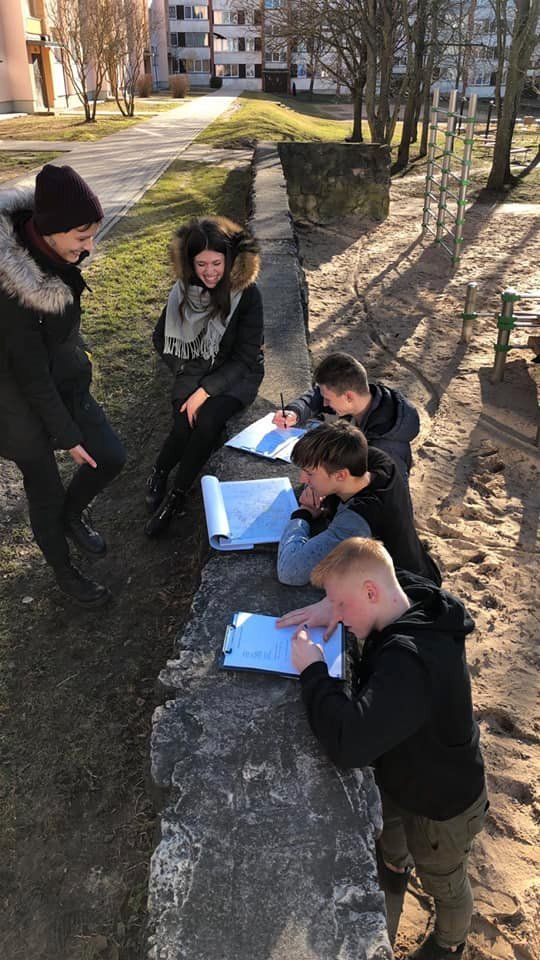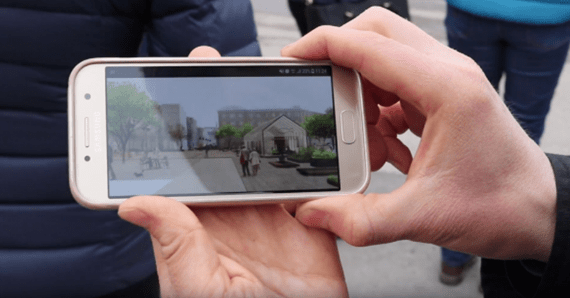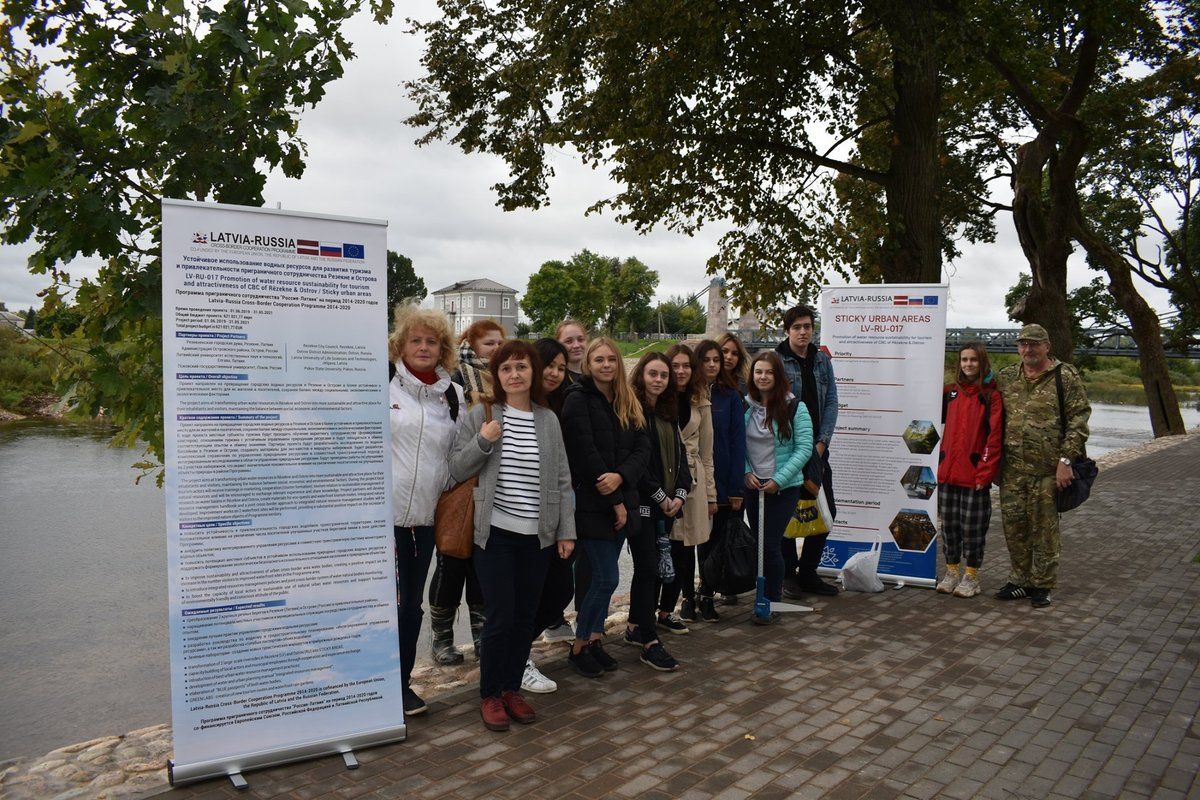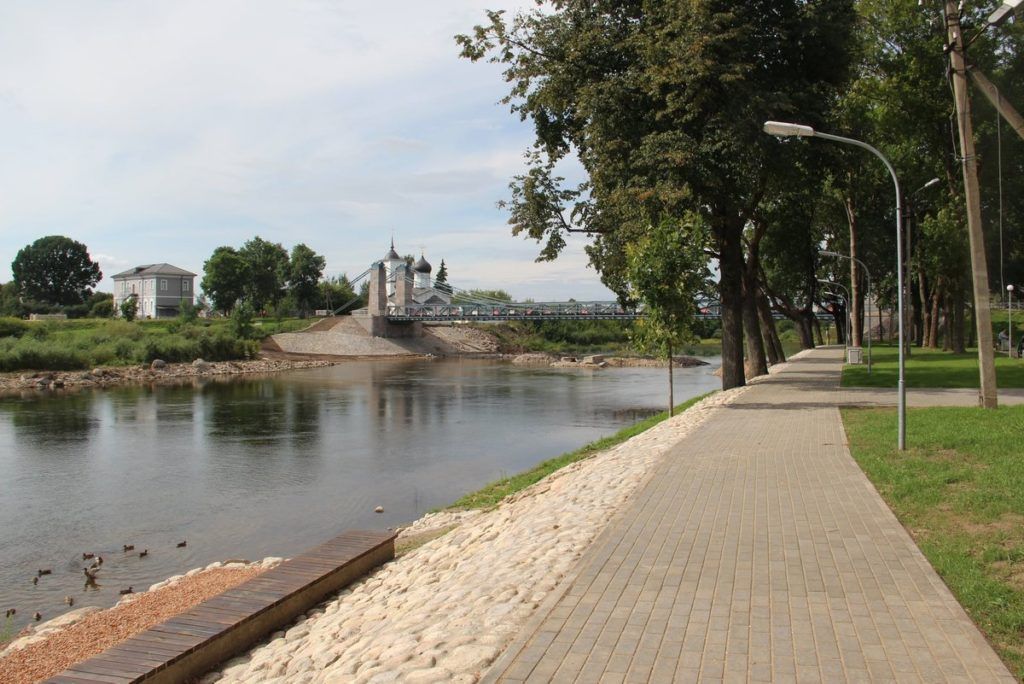Turning city rivers into sunbathing beaches
Riversides cleaned, with lighting system, bins, benches installed, and even a place to sunbathe. “When a place is attractive, it becomes like glue, it sticks you to the territory and that is what we want to do, attract visitors and glue them to our cities”. Sticky Urban Areas is the name and the main idea behind the project funded by Latvia-Russia CBC programme, with the objective to transform natural resources into attractive areas for inhabitants and visitors. Two municipal administrations – Rēzekne City Council in Latvia (LV) and Ostrov District Administration in Russia (RU) – are very concerned about the situation in their cities. Rēzekne is far away from the capital, and not being a seaside city does not help; and Ostrov – located in the eastern part of a huge country like Russia – is often forgotten when it comes to hauling financial resources and attracting businesses. Yet, both places have immense potential, and an untapped opportunity for businesses to thrive and to get tourists moving: their natural resources, especially, their rivers.
Rēzekne and Ostrov are both riverfront cities. The Velikaya and Rēzekne rivers run across their historical centres and represent a key natural axis, a place of reference and one of the most important assets of the cities. However, before the project started the riverbanks were completely abandoned. “There was no possibility to access the river and to spend time there, or go for a walk along the riverbanks”, says Natalija Jupatova, project manager. The partners have cleaned the riversides, have built pedestrian paths and have installed small but essential infrastructure elements like a good lighting system, bins, benches and even a place to sunbathe and swim in the river! “Basically, we have managed to activate one of the main resources of our cities”, continues Natalija. Because attractive places are like a glue: you stick to them!
Now that we are fully immersed in the spring, the next step is greening the space, plant trees and create beautiful gardens along the riverbanks. And this is where the other project partners kick in: two universities – Latvia University of Life Sciences and Pskov State University – and a great army of students complete the team. The students and professors come from relevant study programmes, such as natural resources management and landscape design, and they are determined to help the employees of the municipalities to revitalise the urban areas with their ideas and expertise. The goal is clear: creating a balance between economic development of the territories and the protection and efficient management of the natural resources. “Our main objective is to transform natural resources into attractive areas for inhabitants and visitors, but we are aware that the economic activity can harm our nature, that is why we are striving to find a balance and think not only economically but also eco-friendly to make sure our territories are attractive but also protected” explains Natalija.
 The universities organised trips to the two cities, where students had the chance to participate in mobile green laboratories, analyse the river banks, identify the territories that could be improved. Together with their professors, they developed innovative ideas to create small environmental friendly tourist attractions to make visitors stay in the territory, and not to bypass it.
The universities organised trips to the two cities, where students had the chance to participate in mobile green laboratories, analyse the river banks, identify the territories that could be improved. Together with their professors, they developed innovative ideas to create small environmental friendly tourist attractions to make visitors stay in the territory, and not to bypass it.
The partner universities proposed to develop rain gardens – a solution to transform damp areas along the river where rainwater accumulates, into a garden, selecting only the plants’ species that can benefit from the water excesses. The students are also developing eco-quests – quizzes related to the two places’ nature and history, which tourists will have to solve during their visit. The quizzes will possibly be integrated into a mobile phone application. “At the moment, we are analysing all the ideas sent by the students, trying to identify the most brilliant ones to be part of our planning”, indicates Natalija.
Meanwhile, the universities are collecting information about the two cities, the characteristics of the rivers, the biodiversity of the area: they will provide the city-hall with “fiches” – or “blue passports”- providing solid useful knowledge to keep developing new ideas in the future.

The two universities are also creating a Handbook on how to manage natural resources in the cities. “It is like a schoolbook for students but for us, municipalities. It will help us decide what to invest in, what to pay attention to, in order to manage efficiently and respectfully our natural resources”. The joint Handbook will be shared with the whole region, since every little town or district can find some useful tips for their territories, even across the borders. The Handbook will be part of the two partner universities study programmes as from the next academic year in September. In fact, the two universities are preparing nature specialists, landscape specialists… young professionals who may end up working in theirs or other municipalities, so it is to everyone’s benefit that students learn and benefit from an improved study programme.
Nevertheless, turning the cities into interesting destinations and boosting the economy can only be done together with the tourist sector. Project managers knew this and organised two joint seminars, targeting both the employees of the municipalities and the private tourists’ operators, attended by Latvian and Russian participants. The events were held online due to the pandemic, but this allowed more experts to participate. As Natalija explains, they were a huge success as participants exchanged ideas and contacts and a cross-border network started to take shape.
In the end, the transformation of a city into a touristic hub is a complex endeavour. It requires time, long-term planning and involving the perspective of many different stakeholders, municipalities, universities, businesses. It can be challenging but also very rewarding. Local people are already benefitting from the project’s results. Before they didn’t even have access to their rivers, now they can stroll along the riverbanks, they can swim, sunbathe, enjoy nature and learn about it. “You should come and see it for yourself. People are now satisfied with the place they live in”, states the interviewee.
For Natalija, it would be very important that the project achievements end up in the long-term planning of the city. This would allow to pass from the most immediate, visible results to having a long-term impact on the city. Transforming a place takes time, but cooperation, work and enthusiasm can only accelerate the process.

